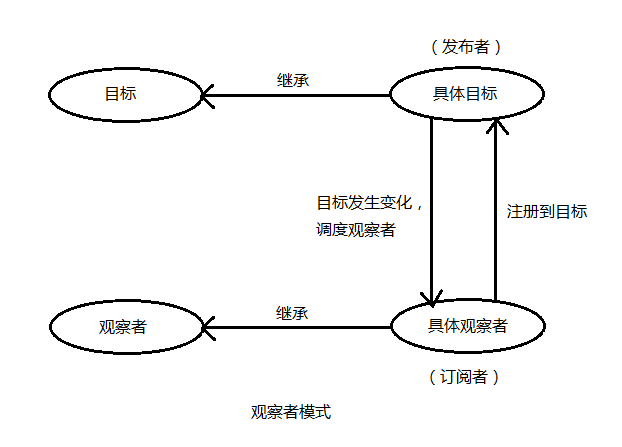首先了解一下观察者模式

1.目标和观察者抽象对象需要首先建立
1 //抽象主题 2 type Subject interface { 3 Add(o Observer) 4 Send(str string) 5 } 6 7 //抽象观察者 8 type Observer interface { 9 Receive(str string) 10 }
2.主题的具体实现
1 //-------------天气主题------------------ 2 type NewsSubject struct { 3 title string 4 l *list.List 5 } 6 7 //天气主题非侵入式实现抽象主题 8 func (sub *NewsSubject) Add(o Observer) { 9 sub.l.PushBack(o) 10 } 11 12 //天气主题非侵入式实现抽象主题 13 func (sub *NewsSubject) Send(str string) { 14 for i := sub.l.Front(); i != nil; i = i.Next() { 15 (i.Value).(Observer).Receive(sub.title + "发送的:" + str) 16 } 17 } 18 19 //-------------热点主题------------------ 20 type HotSubject struct { 21 title string 22 l *list.List 23 } 24 25 //热点主题非侵入式实现抽象主题 26 func (sub *HotSubject) Add(o Observer) { 27 sub.l.PushBack(o) 28 } 29 30 //热点主题非侵入式实现抽象主题 31 func (sub *HotSubject) Send(str string) { 32 for i := sub.l.Front(); i != nil; i = i.Next() { 33 (i.Value).(Observer).Receive(sub.title + "发送的:" + str) 34 } 35 }
3.观察者具体实现
1 //-------------a观察者------------------ 2 type aObserver struct { 3 name string 4 } 5 6 //a观察者非侵入式实现抽象观察者 7 func (o *aObserver) Receive(str string) { 8 fmt.Println("A类观察者【" + o.name + "】接收" + str) 9 } 10 11 //-------------b观察者------------------ 12 type bObserver struct { 13 name string 14 } 15 16 //b观察者非侵入式实现抽象观察者 17 func (o *bObserver) Receive(str string) { 18 fmt.Println("B类观察者【" + o.name + "】接收" + str) 19 }
4.实际调用
1 func main() { 2 a := &aObserver{ 3 name: "张三", 4 } 5 6 b := &bObserver{ 7 name: "李四", 8 } 9 10 //新闻允许a和b类型观察者订阅 11 news := NewsSubject{ 12 l: list.New(), 13 title: "武汉新闻", 14 } 15 news.Add(a) 16 news.Add(b) 17 18 //热点只允许b类型观察者订阅 19 hot := HotSubject{ 20 l: list.New(), 21 title: "孝感热点", 22 } 23 hot.Add(b) 24 25 news.Send("全省暴雨红色警报") 26 hot.Send("全市停工停课") 27 }
5.运行结果
